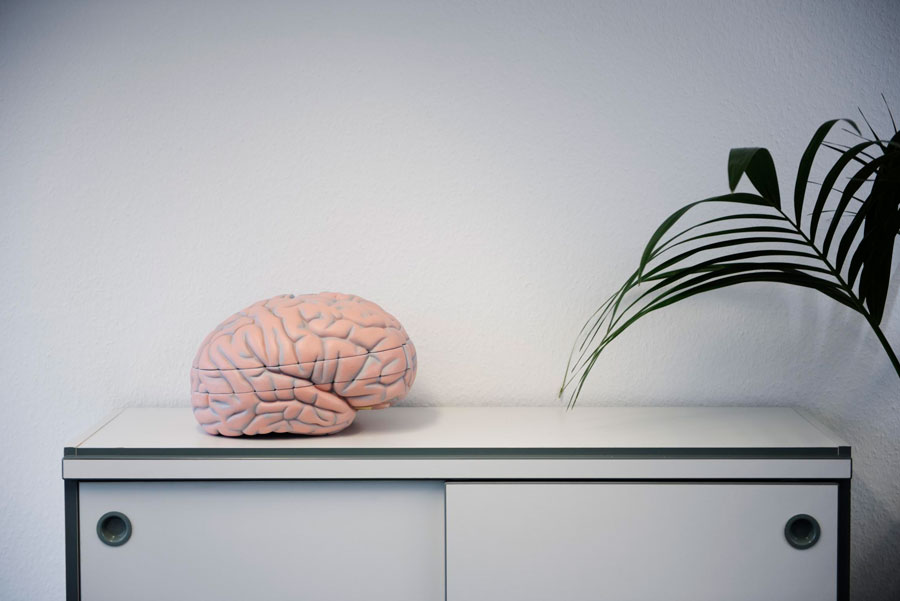The cerebral cortex is a fast learner
Tübingen researchers trace the formation of memories in the cerebral neocortex

© Berthold Steinhilber/laif
/Uni Tübingen/ A team of researchers from the University of Tübingen and the Max Planck Institute for Biological Cybernetics has found that the cerebral cortex plays a much bigger role in storing information than previously believed. The scientists, headed by Svenja Brodt, Professor Steffen Gais and Dr. Monika Schönauer, used high-resolution magnetic resonance imaging to show that the cerebral cortex is involved already early in the learning process. Neuroscience now has to update a widely accepted model, which says this part of the brain is a slow learner. The new study is published in Science.
For centuries, researchers have been trying to track down the secrets of human memory. For a long time, processes that form new memories were barely understood. Traditional models assume that the brain has two systems for memory – one in the hippocampus, which takes in large amounts of information quickly, and the other in the cerebral cortex, where lasting memories can be stored through repeated learning.
The physical signs of memory formation
In this new study, the researchers gave their test subjects a learning task in which they had to remember several pairs of objects and their spatial arrangement on a computer screen – as in a children’s game of “Pairs.” While they conducted this task, their brain activity was recorded by an MRI scanner. The researchers also carried out a special measurement showing the brain tissue microstructure. They used a process called diffusion-weighted imaging, which measures the motion of water molecules in the brain. Because water is slowed down by cell membranes, tracking its motion gives the scientists detailed information about the tissue structure. Measurements were taken at three times: immediately prior to the learning task, 90 minutes later and twelve hours later. “A comparison of the diffusion images before and after learning with a control condition allowed us to draw conclusions about smallest changes in tissue structure caused by the learning process,” explains lead author Svenja Brodt. Thus, traces of the learning process can be observed in the inactive state following completion of the learning task.
“We are moving away from mere snapshots of brain activity taken while the brain is absorbing or recalling information towards an examination of the physical traces left by the storing of information in our brains,” Brodt says. With the help of diffusion-weighted imaging, researchers were able to measure structural changes in the cerebral cortex already 90 minutes after learning – in precisely those regions that showed strong memory-related activity during the learning task. The strongest changes were found in the back of the parietal lobe, the posterior parietal cortex. The bigger these changes were, the better the test subjects could remember the object pairs in the long term.
Stable changes in the cerebral cortex
“These structural changes are not a short-term by-product of increased cell activity during learning, because they remain stable for at least twelve hours,” says study leader Monika Schönauer. She says studies on animals show that these changes are linked to a strengthening of connections between nerve cells, the so-called synapses. “Our results confirm that the cerebral cortex plays a role early on in learning processes, and show that it is immediately involved in the physical storage of information,” Schönauer states. “The earlier assumption that the cerebral cortex learns only slowly can no longer be maintained.”
Head of the working group Steffen Gais adds: “Our findings in recent years have great significance for the further development of current theories about memory formation.” These new findings offer an explanation as to how patients with a damaged hippocampus are in some cases able to learn and remember new information, Gais says. The further investigation of the conditions under which information is stored directly in the cerebral cortex could help in the long term to develop new learning strategies for certain types of memory loss.
Original publication
S. Brodt, S. Gais, J. Beck, M. Erb, K. Scheffler, M. Schönauer: Fast track to the neocortex: A memory engram in posterior parietal cortex. Science, 30 November 2018.




